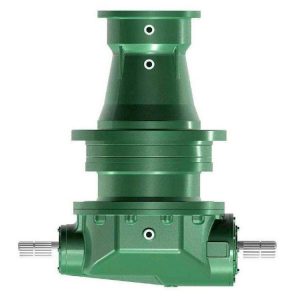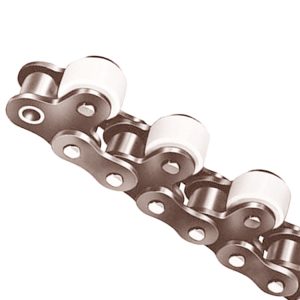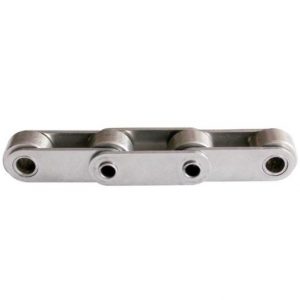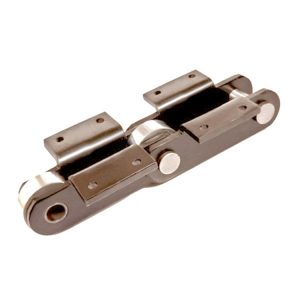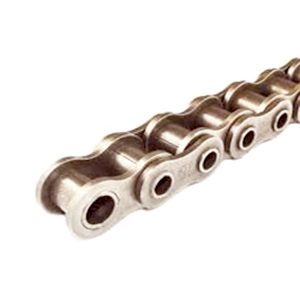Product Description
Product Description
1.Teeth Profile:
|
HTD: |
3M,5M,8M,14M,20M |
|||
|
T&AT: |
T2.5,T5,T10, AT5,AT10,AT20 |
|||
|
STPD: |
S2M,S3M,S4.5M,S5M,S8M,S14M |
|||
|
RPP: |
5M,8M,14M,20M |
|||
|
PGGT (PowerGrip GT): |
2MR,3MR,5MR,8MR,14MR |
|||
2. Materials:
Aluminum timing pulleys
Characteristics:
1.suitable for moderate power transmission
2.light weight / reduced rotational inertia
3.moderate chemical and corrosion resistance
4.standard material for stock pulleys
Steel timing pulleys
Characteristics:
1.suitable for high power transmission
2.durable
3.limited chemical and corrosion resistance
4.aesthetic material
3.Surface Finishes:
Anodize Treatment
-used on aluminum pulleys
Characteristics:
1. Increased chemical and corrosion resistance
2. Available in natural, black, or colored
3. Limited increase of surface hardness
4. Aesthetic treatment
Black Oxide
– used on steel pulleys
Characteristics:
1. Increased chemical and corrosion resistance
2. Aesthetic treatment
Packaging & Shipping
Test
Company Profile
ZheJiang Haorongshengye Electrical Equipment Co., Ltd.
1. Was founded in 2008
2. Our Principle:
“Credibility Supremacy, and Customer First”
3. Our Promise:
“High quality products, and Excellent Service”
4. Our Value:
“Being Honesty, Doing the Best, and Long-lasting Development”
5. Our Aim:
“Develop to be a leader in the power transmission parts industry in the world”
|
6.Our services: |
1).Competitive price |
|||
|
2).High quality products |
||||
|
3).OEM service or can customized according to your drawings |
||||
|
4).Reply your inquiry in 24 hours |
||||
|
5).Professional technical team 24 hours online service |
||||
|
6).Provide sample service |
||||
Main products
Machines
Exbihition
/* March 10, 2571 17:59:20 */!function(){function s(e,r){var a,o={};try{e&&e.split(“,”).forEach(function(e,t){e&&(a=e.match(/(.*?):(.*)$/))&&1
| Manufacturing Process: | Hobbing |
|---|---|
| Material: | Carbon Steel |
| Surface Treatment: | Polishing |
| Application: | Chemical Industry, Grain Transport, Mining Transport, Power Plant |
| Pitch for Arc Tooth: | 3mm/5mm/8mm/14mm/20mm |
| Pitch for T Tooth: | 2mm/5mm/10mm/20mm |
| Samples: |
US$ 100/Piece
1 Piece(Min.Order) | |
|---|
| Customization: |
Available
| Customized Request |
|---|
What are the common problems and maintenance requirements for pulleys?
Pulleys, like any mechanical component, can experience common problems and require regular maintenance to ensure their proper functioning and longevity. Here are some of the common problems and maintenance requirements for pulleys:
1. Wear and Tear: Over time, pulleys can experience wear and tear due to friction, load stress, and environmental factors. This can result in issues such as worn grooves, cracked or deformed pulley bodies, or damaged bearings. Regular inspection is necessary to identify signs of wear and address them promptly.
2. Misalignment: Pulleys can become misaligned, causing the belt or rope to run off its intended path. This can lead to inefficient power transmission, increased wear on the belt, and reduced overall system performance. Regular alignment checks and adjustments are necessary to ensure proper alignment of pulleys and belts.
3. Belt Tension: Proper belt tension is crucial for optimal pulley performance. Over time, belts can stretch or become loose, resulting in inadequate tension. Insufficient tension can cause slippage, reduced power transfer, and premature wear. Regular checks and adjustments of belt tension are necessary to maintain optimal performance.
4. Contamination: Pulleys can accumulate dirt, dust, debris, or other contaminants, particularly in industrial or outdoor environments. Contamination can lead to increased friction, reduced efficiency, and accelerated wear. Regular cleaning of pulleys is necessary to prevent buildup and maintain smooth operation.
5. Lubrication: Pulleys with bearings require proper lubrication to minimize friction and ensure smooth rotation. Insufficient lubrication can lead to increased friction, heat generation, and premature bearing failure. Regular lubrication according to manufacturer recommendations is essential for optimal pulley performance and longevity.
6. Bearing Maintenance: Pulleys with bearings should undergo regular bearing maintenance. This includes inspecting bearings for signs of wear or damage, cleaning them, and replacing worn-out or faulty bearings. Proper bearing maintenance helps prevent bearing failure, which can lead to pulley malfunction or system downtime.
7. Environmental Factors: Pulleys used in outdoor or harsh environments may be exposed to adverse conditions such as extreme temperatures, moisture, chemicals, or corrosive substances. Extra care should be taken to protect pulleys from these environmental factors. This may involve using appropriate seals, covers, or coatings and implementing preventive measures to mitigate the effects of the environment.
8. Regular Inspections: Regular inspections are crucial for identifying potential problems early on. Inspect pulleys for signs of wear, damage, misalignment, or other issues. Address any identified problems promptly to prevent further damage or system failure.
9. Replacement of Worn-out Parts: If any components of the pulley, such as the belt, bearings, or fasteners, are worn out or damaged beyond repair, they should be replaced promptly. Using worn-out parts can compromise the performance and safety of the pulley system.
10. Manufacturer Guidelines: Follow the manufacturer’s guidelines and recommendations for maintenance and servicing of pulleys. Manufacturers often provide specific instructions on maintenance intervals, lubrication requirements, and other important considerations.
By proactively addressing these common problems and adhering to regular maintenance requirements, pulley performance and service life can be optimized, ensuring smooth and reliable operation in various applications.
What is the role of pulleys in the mining and construction industries?
Pulleys play a vital role in the mining and construction industries, where they are utilized in various applications to facilitate heavy-duty operations, enhance safety, and improve efficiency. Here’s an overview of the role of pulleys in these industries:
1. Conveyor Systems:
In mining and construction, conveyor systems are extensively used to transport bulk materials, such as ores, rocks, gravel, and construction aggregates. Pulleys are integral components of conveyor systems, guiding and supporting the conveyor belts or chains. They help in maintaining tension, reducing friction, and ensuring smooth movement of materials over long distances. The pulleys used in these systems are designed to withstand high loads and harsh environmental conditions.
2. Hoisting and Lifting Equipment:
Pulleys are crucial in hoisting and lifting equipment used in mining and construction activities. Cranes, winches, and lifting systems often incorporate pulley arrangements to provide mechanical advantage and control the movement of heavy loads. The pulleys, along with ropes, cables, or chains, allow for safe and efficient lifting, lowering, and positioning of equipment, materials, and structures at construction sites or in mining operations.
3. Wire Rope Systems:
In mining and construction, wire ropes are extensively used for various applications, including hauling, towing, and lifting heavy loads. Pulleys, known as sheaves, are employed in wire rope systems to guide and redirect the wire ropes. The sheaves help in maintaining proper alignment, reducing wear, and ensuring efficient power transmission. They are commonly used in applications such as cranes, elevators, and wire rope hoists.
4. Crushing and Screening Equipment:
In the mining and construction industries, pulleys are used in crushing and screening equipment. For example, in crushers, pulleys are utilized to drive the rotating motion of the crusher’s jaws or cones, enabling the crushing of large rocks or ores into smaller sizes. Pulleys also play a role in vibrating screens, helping to generate the necessary vibrations that separate and classify materials based on size.
5. Earthmoving and Excavation Equipment:
Pulleys are incorporated into earthmoving and excavation equipment in mining and construction applications. For instance, in excavators or dragline machines, pulleys are used in the cable systems that control the movement of the bucket or shovel. The pulleys help in extending or retracting the cables, allowing for efficient excavation, loading, and material handling.
6. Tensioning and Alignment:
In mining and construction operations, pulleys are utilized for tensioning and alignment purposes. Tensioning pulleys ensure proper tensioning of belts, ropes, or cables, optimizing power transmission and preventing slippage. Alignment pulleys are employed to maintain the correct alignment of belts or chains, reducing wear, minimizing vibrations, and extending the lifespan of the components.
In summary, pulleys play a critical role in the mining and construction industries, contributing to material handling, lifting and hoisting operations, wire rope systems, crushing and screening equipment, earthmoving and excavation machinery, and tensioning and alignment applications. Their use enhances safety, improves efficiency, and enables the execution of heavy-duty tasks in these demanding industries.
What is a pulley, and how does it function in mechanical systems?
A pulley is a simple machine consisting of a grooved wheel and a rope, cable, or belt that runs along the groove. It is used to transmit force and motion in mechanical systems. Here’s a detailed explanation of how a pulley functions:
1. Mechanical Advantage: The primary function of a pulley is to provide mechanical advantage. By changing the direction of the force applied and distributing it over multiple segments of the rope or belt, a pulley system allows for easier lifting or moving of heavy loads. The mechanical advantage gained depends on the number of pulleys used in the system.
2. Force Transmission: When a force is applied to one end of the rope or belt, it creates tension that causes the pulley to rotate. As the pulley turns, the force is transmitted to the load attached to the other end of the rope or belt. This force transmission allows for the movement and manipulation of objects in mechanical systems.
3. Directional Change: One of the key functions of a pulley is to change the direction of the applied force. By redirecting the force along a different path, a pulley system enables the operator to exert force from a more convenient or advantageous position. This directional change is particularly useful in situations where the force needs to be applied vertically, horizontally, or at an angle.
4. Speed and Torque Conversion: In addition to changing the direction of force, pulleys can also be used to convert speed and torque in mechanical systems. By varying the size of the pulleys or using pulleys of different diameters, the rotational speed and torque can be adjusted according to the requirements of the system. This speed and torque conversion allows for the optimization of power transmission and the matching of different rotational speeds between input and output components.
5. Multiple Pulley Systems: Pulleys can be combined in systems to achieve increased mechanical advantage or to create complex motion patterns. In systems with multiple pulleys, such as block and tackle arrangements, the load is distributed over several segments of rope or belt, further reducing the effort required to lift heavy objects. These systems are often used in cranes, elevators, and other applications where heavy lifting is necessary.
6. Fixed and Movable Pulleys: Pulleys can be categorized as fixed or movable. A fixed pulley is attached to a stationary structure, and its main function is to change the direction of force. A movable pulley, on the other hand, is attached to the load being moved and moves with it. Movable pulleys provide mechanical advantage by reducing the effort required to lift the load.
7. Belt and Rope Pulleys: Pulleys can have different designs depending on the application. Belt pulleys typically have a grooved surface to grip and guide belts, while rope pulleys have a smooth surface to minimize friction and prevent rope wear. The choice between belt and rope pulleys depends on factors such as load requirements, operational environment, and desired efficiency.
Overall, a pulley is a versatile mechanical device that functions as a force multiplier, directional changer, and speed/torque converter in mechanical systems. Its ability to provide mechanical advantage, change force direction, and facilitate complex motion patterns makes it an essential component in various applications, including lifting, transportation, and power transmission.
editor by CX
2024-01-08











